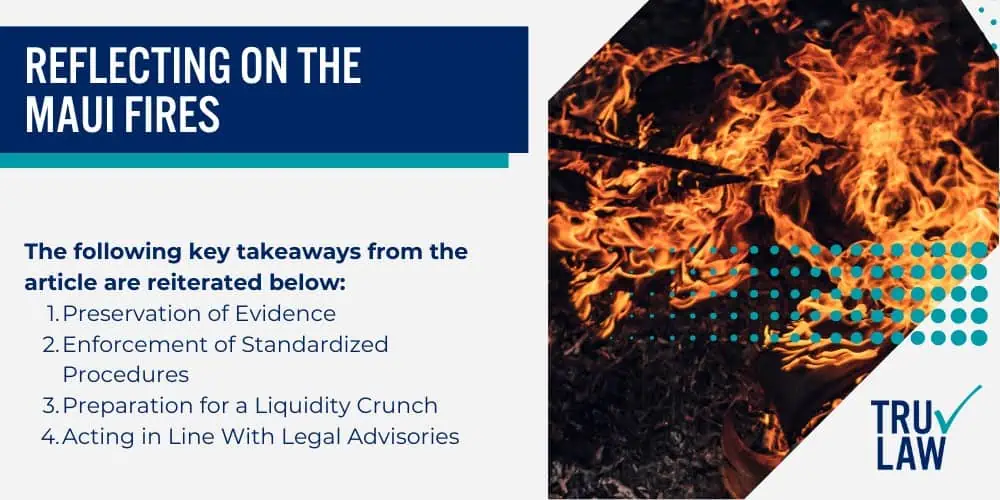This timeline will help understand the sequence of events that led to the Maui County’s lawsuit against the Hawaiian Electric Company for alleged negligence.
The details provided herein are based on court documents from the Second Circuit Court case number 2CCV-23-0000238.
August 8th – The Triggering Event
On August 8th, the Maui wildfires took hold, their origins traced back to an area of Lahaina.
Exceptionally high winds coupled with tremendously dry conditions led to the rapid spread of the fires over a large expanse of land.
August 9th – Fires Spread to Kula and Olinda
Within 24 hours, the fires had rapidly spread, consuming hundreds of acres in Kula and Olinda.
The expansion of the fire was potentially boosted by the continued presence of wind and arid conditions.
Despite the worsening situation, the Hawaiian Electric Company remained operational throughout these areas.
August 10th-13th – Continued Burning and Devastation
Over the following days, the wildfires continued to rage, ultimately ravaging over 2,000 acres in Lahaina alone.
During this time, both public and private properties were greatly impacted, with many residents facing dangerous conditions and significant property loss.
Post August 14th – Aftermath and Legal Consequences
Once the fires were finally brought under control and extinguished, the extent of the damage was clear.
With over 2,000 acres of land in Lahaina and hundreds more in Kula and Olinda destroyed, local resources and public property suffered immensely.
In the aftermath of the fires, Maui County initiated a lawsuit against the Hawaiian Electric Company.
According to the allegations stated in the lawsuit, despite the clear and present danger posed by the high winds and dry conditions, the utility company failed to shut off the power.
This negligence, the lawsuit argues, contributed significantly to the severity and spread of the wildfires.
As a result of these fires, the County has incurred considerable expense in terms of firefighting efforts, rehabilitation of impacted areas, and the restoration of public properties.
Furthermore, they are also seeking compensation for the loss of natural resources that were damaged or destroyed in the blazes.

The following timestamps of the Maui fire includes:
- The fires initiated in Lahaina on August 8th due to high winds and arid conditions
- Spreads to Kula and Olinda within 24 hours
- Continued to burn and spread from August 10th to 13th
After the fires were brought under control, Maui County filed a lawsuit against the Hawaiian Electric Company for failing to shut off power in hazardous conditions
This lawsuit advances the legal precedent that utility companies must take appropriate precautions during potential fire-risk conditions to prevent or mitigate such calamities.
The outcome of this case may have significant ramifications for how such situations are handled in the future.









